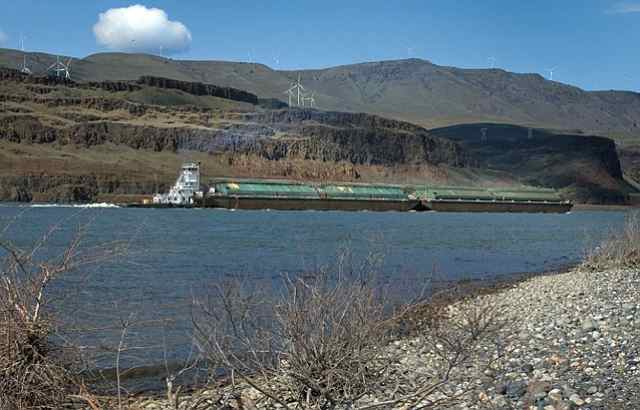forum
library
tutorial
contact

Weather Boosts
PNW Wheat Production
by Matthew Weaver
Capital Press, October 4, 2016
|
the film forum library tutorial contact |

|
Weather Boosts
by Matthew Weaver
|
(bluefish does the math: 2015: $5.50/bushel 2016:$4.76/bushel is a 13% drop in price for soft white wheat,
while spring wheat production up 18% with spring wheat yields up 41% in Oregon and up 27% in Idaho.)
 Good growing weather bolstered wheat yields this year compared to 2015, but growers aren't seeing the growth in their wallets.
Good growing weather bolstered wheat yields this year compared to 2015, but growers aren't seeing the growth in their wallets.
Washington's winter wheat production this year topped 130 million bushels, up 46 percent from 89 million bushels harvested in 2015, according the USDA National Agricultural Statistics Service.
Spring wheat production was 27 million bushels, up 18 percent over last year.
"It was a perfect year for growing wheat, with the exception of falling numbers," said Mary Palmer Sullivan, vice president of the Washington Grain Commission.
Many farmers are seeing lower prices due to low falling number, a test run by grain elevators for starch damage. Farmers and researchers are trying to figure out why so much damage occurred this year.
Some farmers told Sullivan it was "the best-looking wheat" they'd seen in years.
"The unfortunate thing is that prices are not cooperating, and having that much wheat on the market can sometimes have a negative impact," she said.
A Portland on Monday soft white wheat traded for $4.50 to $4.76 per bushel. Hard red winter wheat ranged from $4.02 to $4.83 per bushel and dark northern spring wheat was $5.63 to $5.93 per bushel.
The prices are down significantly from last October, when soft white wheat prices ranged from $5.41 to $5.50 a bushel.
Wheat with low falling number also brings a lower price. As of Sept. 13, 42 percent of soft white wheat samples collected by Washington State Grain Inspection showed a falling number of 300 or lower.
In Idaho, winter wheat production was 66.7 million bushels, up 15 percent from last year. Spring wheat production was 34.4 million bushels, up 13 percent.
In Oregon, winter wheat production was 35.5 million bushels, up 3 percent from last year. Spring wheat production was 4.4 million bushels, down 5 percent.
Oregon Wheat CEO Blake Rowe said his organization believes the NASS numbers for his state are a little low, and are more likely in the low to mid-40 million bushel range for "more of an average yield year."
Low prices remain a concern, he said.
There is "nothing I can point to that will drive prices higher other than hope," Rowe said.
Wheat acreage varied across the region, according to NASS.
Idaho farmers harvested 710,000 acres of winter wheat, the same as in 2015. Spring wheat dropped 9.2 percent to 395,000 acres.
Winter wheat yields increased from 82 to 94 bushels per acre and spring wheat yields rose from 70 to 87 bushels per acre.
The harvested Oregon winter wheat acreage was 710,000 acres, a decrease of 3.4 percent. Harvested spring wheat acreage dropped 6.5 percent 87,000 acres.
Winter wheat yields increased from 47 to 50 bushels per acre. Spring wheat yields were 51 bushels per acre, up 1 bushel from 2015's yields.
Washington farmers harvested 1.67 million winter wheat acres, up 21.6 percent from 2015. They harvested 530,000 acres of spring wheat, a drop of 16.5 percent from 2015.
Winter wheat yields rose from 56 to 78 bushels per acre. Spring wheat yields were 51 bushels per acre, up from 36 in 2015.
Nationwide, total wheat production increased 12 percent from 2.06 billion bushels in 2015 to 2.3 billion bushels this year. The average yield increased from 43.6 to 52.6 bushels per acre.
learn more on topics covered in the film
see the video
read the script
learn the songs
discussion forum
